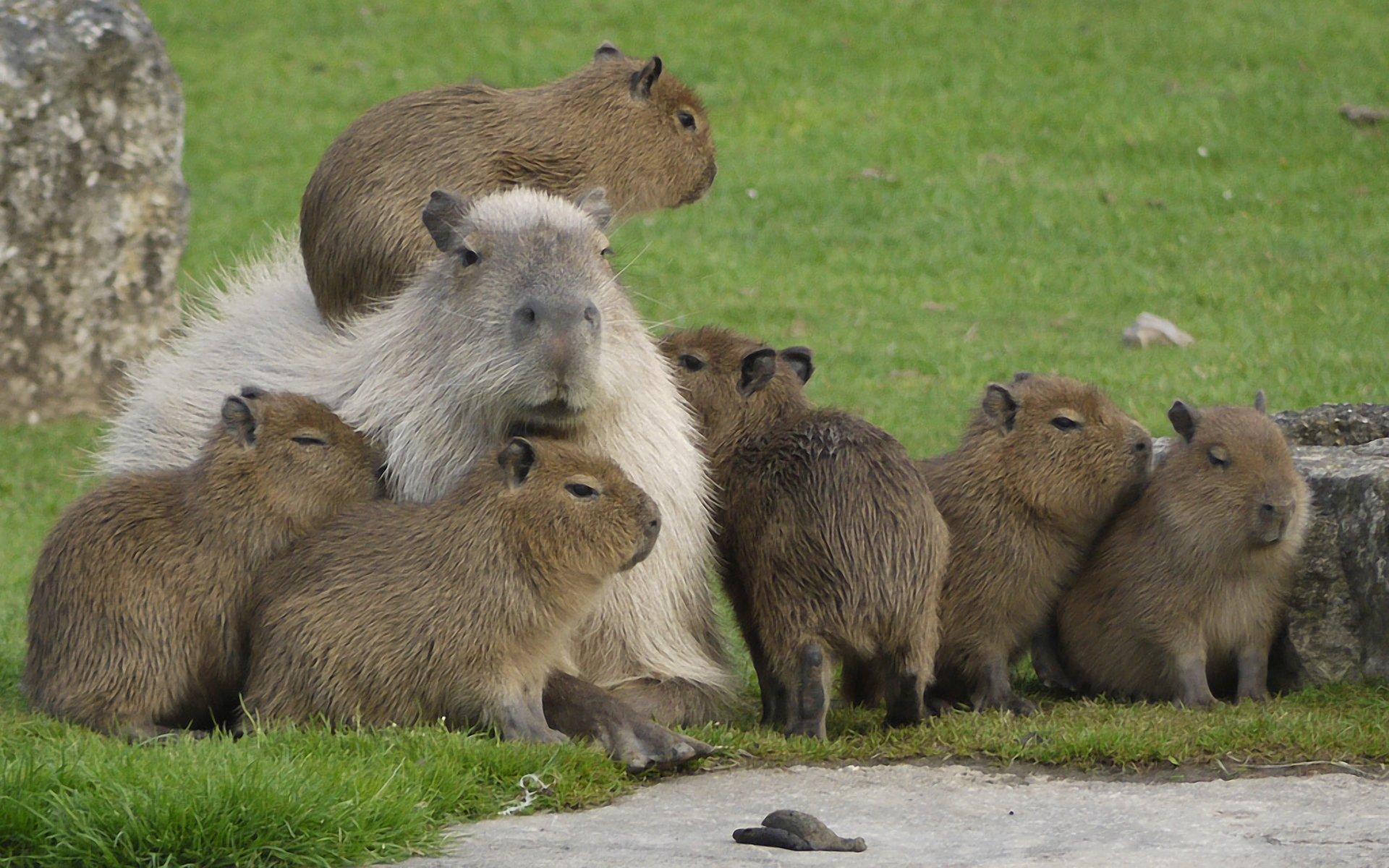Imagine a group of giant rodents, each larger than a medium-sized dog, nonchalantly chilling in a shallow pool of water. Now picture a few of them, perhaps a mother and her offspring, stacked on top of each other like some sort of furry Jenga game. This, my friends, is the peculiar and altogether endearing sight of capybaras engaged in their unique social behavior: pyramiding. It might seem unusual, even comical, but this seemingly bizarre act holds a deeper meaning within the fascinating world of these gentle giants.

Image: wallpaperbat.com
Capybaras, the largest rodents on Earth, are known for their laid-back nature, gentle disposition, and remarkable ability to co-exist peacefully with a variety of other species, from birds to reptiles. While their peaceful demeanor and social interactions are well documented, the act of pyramiding, while not always common, has intrigued scientists and casual observers alike, prompting investigations into the reasons behind this unique social behavior.
Why Do Capybaras Stack Themselves?
There are several theories circulating among researchers and animal behaviorists regarding the motivations behind capybara pyramiding. Each theory offers a fascinating insight into the social dynamics of these remarkable creatures.
1. Social Bonding and Hierarchy
One of the most compelling theories suggests that capybaras stacking on top of each other is a form of social bonding and hierarchy display. In this scenario, the capybara on top, often the dominant member of the group, asserts their status and strengthens social bonds with the others. This behavior may also be a way for young capybaras to learn about their place within the social hierarchy.
Researchers have observed that the capybaras on the bottom tend to be more submissive and tolerant of the behavior, potentially playing an important role in maintaining social harmony within the group. This complex social interaction, while seemingly simple, showcases the intricate dynamics present within a capybara colony.
2. Thermal Regulation and Sunbathing
Another intriguing theory suggests that pyramiding might be a method of thermal regulation. Capybaras are semi-aquatic animals and rely on water for staying cool. However, when they’re out of the water, they need to find other ways to regulate their body temperature, especially in sunny climates. By stacking on top of each other, they can create multiple layers of fur, providing insulation and preventing excessive heat loss.
This behavior may also be linked to sunbathing. Given their susceptibility to sunburn, capybaras often seek out shaded areas, but sometimes they may stack on top of each other to maximize their sun exposure, potentially absorbing vital Vitamin D without exposing their sensitive skin directly to the sun’s harsh rays.

Image: www.pinterest.jp
3. A Combination of Factors
While the individual theories provide intriguing insights, the reality is likely a combination of these factors. The act of pyramiding may serve multiple purposes simultaneously, allowing capybaras to bond, display dominance, adjust to temperature change, and maximize sun exposure, all within a single, seemingly bizarre behavior.
Observing Capybara Pyramiding in Nature
Observing this peculiar behavior in the wild requires patience and keen observation. Capybaras are known for their relaxed and placid temperament, often spending their days lounging near water bodies or in the shade of trees. While pyramiding may not be a common sight, keeping an eye out for groups of capybaras can present opportunities to witness this fascinating social interaction.
It is important to note that capybaras, like any wild animal, should be observed from a distance. Approaching them too closely can cause stress and disrupt their natural behavior. Researchers and conservationists often use non-invasive methods like remote cameras and binoculars to minimize disturbance while observing these fascinating creatures.
Capybara Standing On Top Of Each Other
Capybara Pyramiding: A Symbol of Harmony
The act of capybaras stacking on top of each other, regardless of the true motivation behind it, represents a fascinating and endearing glimpse into the social dynamics of these peaceful creatures. As we continue to learn more about these gentle giants, the act of pyramiding serves as a reminder of the complex social fabric that binds them, reminding us of the beauty and intricate complexity found within the natural world.
The next time you encounter a group of these amiable creatures, take a moment to observe their behavior. You might just catch a glimpse of a capybara pyramid, a testament to the fascinating world of these unique and peaceful animals.





